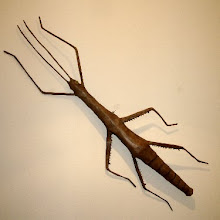On his departure from Arezzo, Gaddo went to Pisa, where he made, for a niche in the chapel of the Incoronata in the Duomo, the Ascension of Our Lady into Heaven, where Jesus Christ is awaiting her, with a richly appareled throne for her seat. This work was executed so well and so carefully for the time, that it is in an excellent state of preservation to-day. After this, Gaddo returned to Florence, intending to rest. Accordingly he amused himself in making some small mosaics, some of which are composed of egg-shells, with incredible diligence and patience, and a few of them, which are in the church of S. Giovanni at Florence, may still be seen. It is related that he made two of these for King Robert, but nothing more is known of the matter. This much must suffice for the mosaics of Gaddo Gaddi. - The Lives of the Painters, Sculptors & Architects, Volume 1 by Giorgio Vasari, A. B. Hinds, trans, 1900
Sometime in the 15th century, the painter Cennino Cennini wrote Il Libro dell' Arte, a sort of handbook of Renaissance art methods. He included a short section on creating a "mosaic with crushed eggshells, painted... take your plain white crushed eggshells, and lay them in over the figure which you have drawn; fill in and work as if they were colored... when you have laid in your figure, you set to painting it, section by section, with the regular colors from the little chest... just using a wash of the colors. And then, when it is dry, varnish, just as you varnish the other things on the panel." He's referring to work on glass, but you get the point. He goes on to describe the gilding of crushed eggshells.
It appears that the artists working with eggshell at the time intended to simulate the texture of mosaics and some of the aesthetic by blocking out distinct areas of color. With traditional mosaic, all properties of color, shading, etc. are dependent on selection and placement of available tesserae - the little pieces of stone, glass, tile etc that make up the mosaic. Individual areas of color are distinct and border each other sharply - there is no blending like there might be with paint.
The next reference I could find was in the May 1926 issue of Popular Science, where an artist used them to make decorative objects in the style of seashell encrusted boxes, etc that were popular at the time. Like the Italian masters, she painted her scenes after the eggshells were applied to the surface.
By the 1930’s articles mentioning eggshells appear, peaking in the 60’s and early 70s. So far I haven’t found a definitive “first” use of dyed eggshells for mosaics, but at some point a definite aesthetic emerged. Below is an example that showed up on ebay recently – this is the “classic” look of an eggshell mosaic.




Why we're making money from online casinos - Work
ReplyDeleteWith casinos and their amazing benefits, it's very easy to make money หารายได้เสริม from it. Whether you're looking for 바카라 a fast-growing 제왕 카지노 casino,